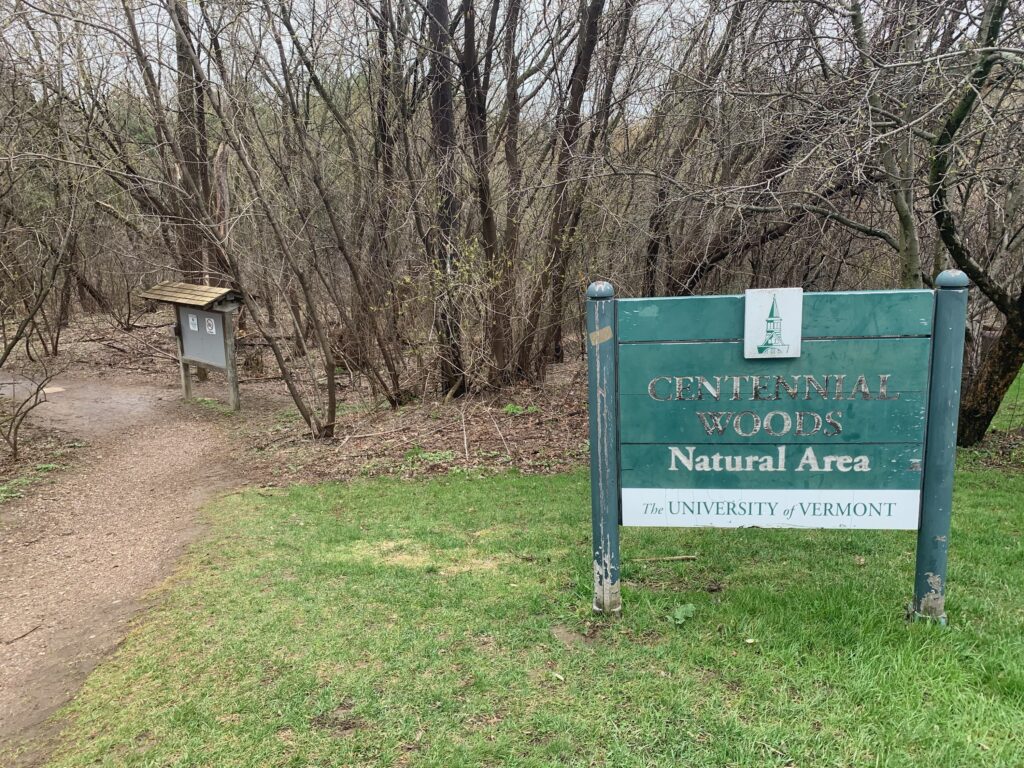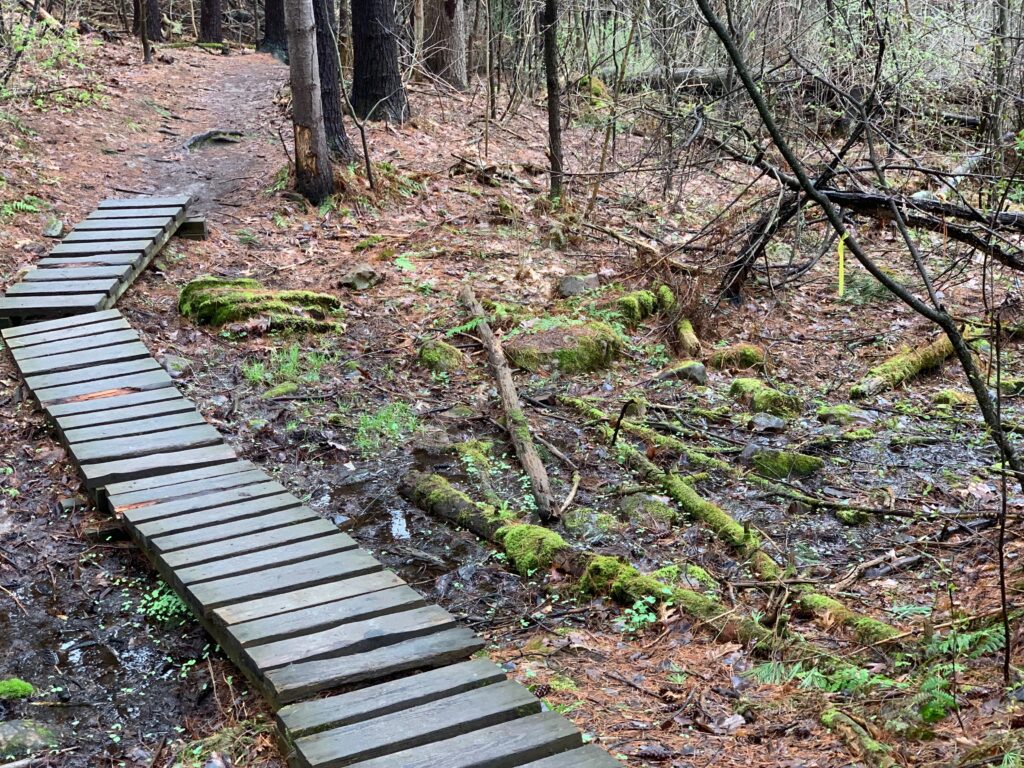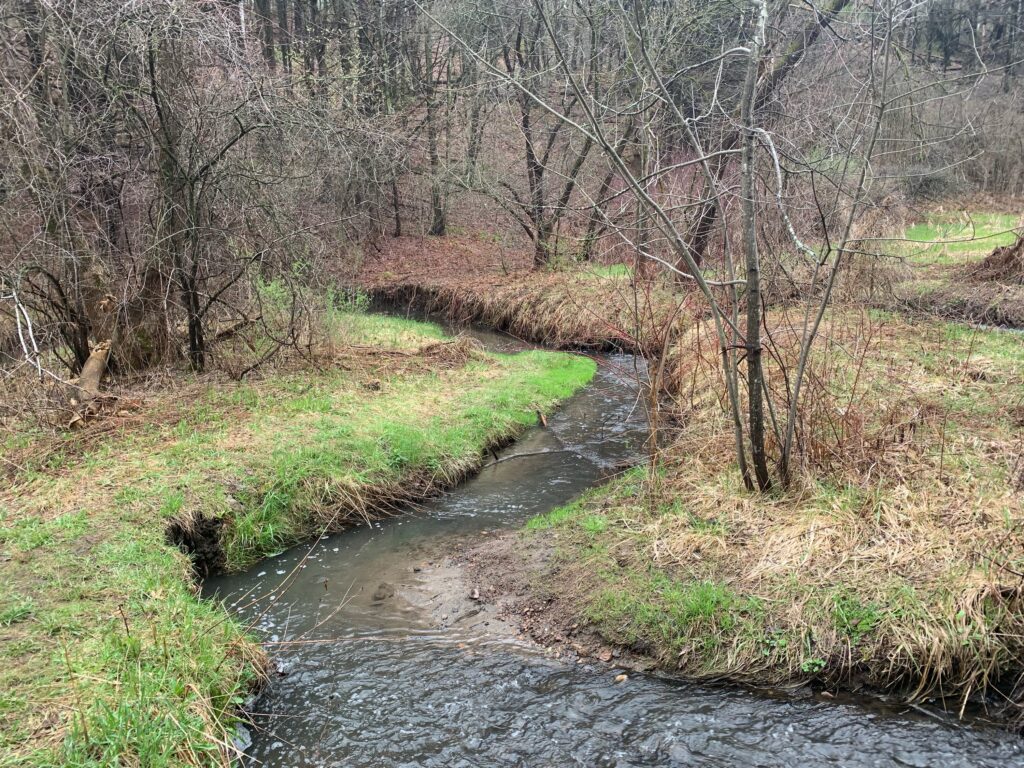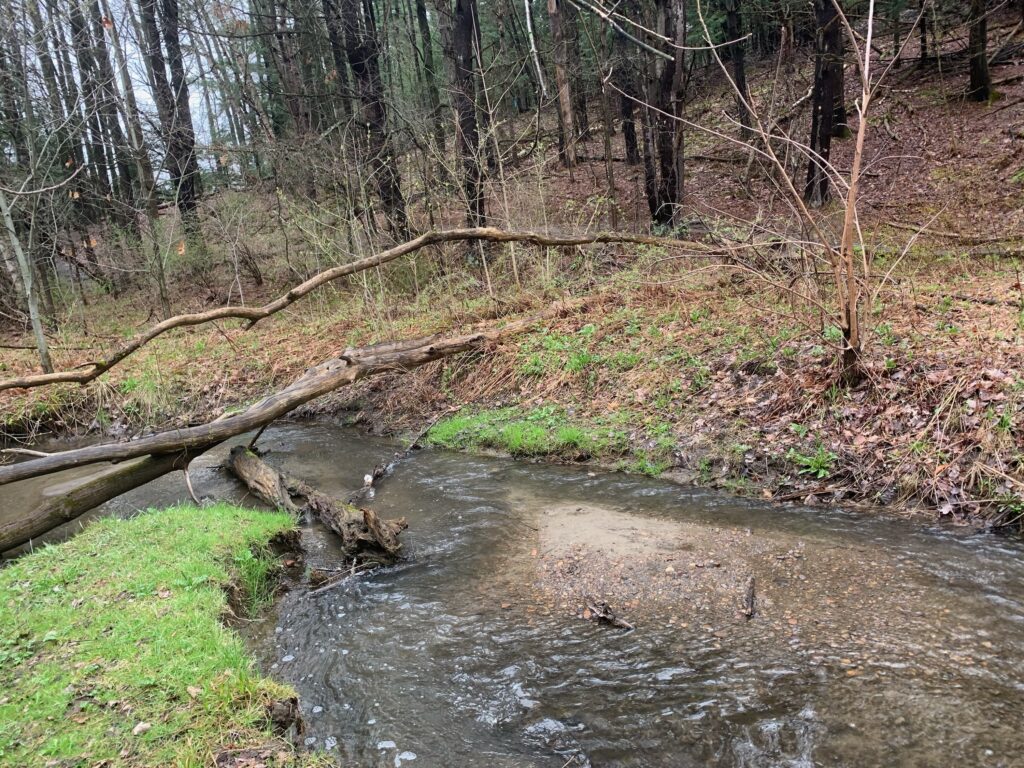
Cloudy and misty, 55 degrees F.
As the semester comes to a close, it becomes increasingly more difficult coming to terms with leaving behind one of my favorite places in Burlington, Centennial Woods. Especially as plants begin popping up through soil and trees slowly getting greener, it makes it harder to say goodbye to this place for the summer. I’ve explored this location for quite a bit of time this semester and have seen it go through many changes throughout the shift from harsh winter to rainy spring. I often consider the heritage of the land as belonging to the Abenaki prior to European colonization, and in many ways, the Abenaki’s legacy lives on through the natural history and ecology and of the landscape.
Furthermore, the shift in Vermont from exploitative land use to conservation to recreation is overly apparent in Centennial, as during each one of my visits there I have seen at least one fellow hiker, runner, or dog walker using the space recreationally. There is a great cultural emphasis on getting outdoors in the UVM and greater Burlington communities that makes Centennial Woods such a highly popularized location to spend time in, especially as the weather gets warmer.

Place-based education is an idea that has reached me throughout my time NR001 & NR002, as well as in my Environmental Studies courses, various guest lectures, and time spent outside with friends. Since August, I have come to feel like a significant part of the landscape in Vermont, and specifically Centennial Woods. UVM students (including myself) have a large impact on the health of this natural area, both directly (ie leave no trace principles) or indirectly (runoff of pollution from fields into the natural area). I feel like I am part of my place through small tasks like picking up litter when I visit and making the ecosystem just a little cleaner and healthier for wildlife. Simultaneously, I must consider how my own visits inspecting plant species impacts their ecological health in addition to other practices such as walking on trails while they’re still muddy and compacting the soil. Regardless of whether my impact on Centennial is more positive or negative, I continue to see myself as part of the landscape.

Some phenological changes I have noticed since my last visit to Centennial about a week ago include more moss, increased fern growth, and trees beginning to bud. Additionally, the trails have dried up a little bit; while they are still muddy, the trails are more firm and sturdy. Additionally, the water level in the stream is a little lower than it has been and is flowing less rapidly.

I would like to extend my deepest thanks for following along Centennial Woods’ phenological changes throughout the past semester or two with me, and hope you enjoy your summer.
Sincerely,
Melissa.


Recent Comments